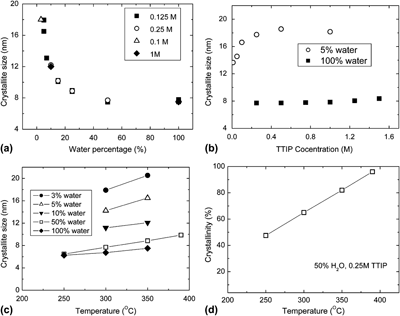Crossref Citations
This article has been cited by the following publications. This list is generated based on data provided by
Crossref.
Mi, Jian-Li
Clausen, Casper
Bremholm, Martin
Lock, Nina
Jensen, Kirsten M. Ø.
Christensen, Mogens
and
Iversen, Bo B.
2012.
Rapid Hydrothermal Preparation of Rutile TiO2 Nanoparticles by Simultaneous Transformation of Primary Brookite and Anatase: An in Situ Synchrotron PXRD Study.
Crystal Growth & Design,
Vol. 12,
Issue. 12,
p.
6092.
Lock, Nina
Jensen, Ellen M. L.
Mi, Jianli
Mamakhel, Aref
Norén, Katarina
Qingbo, Meng
and
Iversen, Bo B.
2013.
Copper doped TiO2 nanoparticles characterized by X-ray absorption spectroscopy, total scattering, and powder diffraction – a benchmark structure–property study.
Dalton Transactions,
Vol. 42,
Issue. 26,
p.
9555.
Jensen, Kirsten M. Ø.
Tyrsted, Christoffer
Bremholm, Martin
and
Iversen, Bo B.
2014.
In Situ Studies of Solvothermal Synthesis of Energy Materials.
ChemSusChem,
Vol. 7,
Issue. 6,
p.
1594.
Wang, Xueqin
Sø, Lasse
Su, Ren
Wendt, Stefan
Hald, Peter
Mamakhel, Aref
Yang, Chuanxu
Huang, Yudong
Iversen, Bo B.
and
Besenbacher, Flemming
2014.
The influence of crystallite size and crystallinity of anatase nanoparticles on the photo-degradation of phenol.
Journal of Catalysis,
Vol. 310,
Issue. ,
p.
100.
Hellstern, Henrik L.
Becker, Jacob
Hald, Peter
Bremholm, Martin
Mamakhel, Aref
and
Iversen, Bo Brummerstedt
2015.
Development of a Dual-Stage Continuous Flow Reactor for Hydrothermal Synthesis of Hybrid Nanoparticles.
Industrial & Engineering Chemistry Research,
Vol. 54,
Issue. 34,
p.
8500.
Demir, Nazlı
Gündüz, Gönül
and
Dükkancı, Meral
2015.
Degradation of a textile dye, Rhodamine 6G (Rh6G), by heterogeneous sonophotoFenton process in the presence of Fe-containing TiO2 catalysts.
Environmental Science and Pollution Research,
Vol. 22,
Issue. 5,
p.
3193.
Sreedhar, M.
Reddy, I. Neelakanta
Bera, Parthasarathi
Ramachandran, D.
Gobi Saravanan, K.
Rabel, Arul Maximus
Anandan, C.
Kuppusami, P.
and
Brijitta, J.
2015.
Cu/TiO2 thin films prepared by reactive RF magnetron sputtering.
Applied Physics A,
Vol. 120,
Issue. 2,
p.
765.
Mi, Jian-Li
Jensen, Kirsten M. Ø.
Tyrsted, Christoffer
Bremholm, Martin
and
Iversen, Bo B.
2015.
In situ total X-ray scattering study of the formation mechanism and structural defects in anatase TiO2 nanoparticles under hydrothermal conditions.
CrystEngComm,
Vol. 17,
Issue. 36,
p.
6868.
Mi, Jian-Li
Clausen, Henrik F.
Bremholm, Martin
Schmøkel, Mette S.
Hernández-Fernández, Patricia
Becker, Jacob
and
Iversen, Bo B.
2015.
Pulsed-Flow Near-Critical and Supercritical Synthesis of Carbon-Supported Platinum Nanoparticles and In Situ X-ray Diffraction Study of Their Formation and Growth.
Chemistry of Materials,
Vol. 27,
Issue. 2,
p.
450.
Bøjesen, E. D.
and
Iversen, B. B.
2016.
The chemistry of nucleation.
CrystEngComm,
Vol. 18,
Issue. 43,
p.
8332.
Mostaghni, Fatemeh
and
Abed, Yasaman
2016.
Structural, Optical and Photocatalytic Properties of Co-Tio2 Prepared by Sol-Gel Technique.
Materials Research,
Vol. 19,
Issue. 4,
p.
741.
Saura-Múzquiz, Matilde
Granados-Miralles, Cecilia
Stingaciu, Marian
Bøjesen, Espen Drath
Li, Qiang
Song, Jie
Dong, Mingdong
Eikeland, Espen
and
Christensen, Mogens
2016.
Improved performance of SrFe12O19bulk magnets through bottom-up nanostructuring.
Nanoscale,
Vol. 8,
Issue. 5,
p.
2857.
Makwana, Neel M.
Tighe, Christopher J.
Gruar, Robert I.
McMillan, Paul F.
and
Darr, Jawwad A.
2016.
Pilot plant scale continuous hydrothermal synthesis of nano-titania; effect of size on photocatalytic activity.
Materials Science in Semiconductor Processing,
Vol. 42,
Issue. ,
p.
131.
Hellstern, Henrik L.
Bremholm, Martin
Mamakhel, Aref
Becker, Jacob
and
Iversen, Bo B.
2016.
Hydrothermal Synthesis of TiO2@SnO2 Hybrid Nanoparticles in a Continuous‐Flow Dual‐Stage Reactor.
ChemSusChem,
Vol. 9,
Issue. 5,
p.
532.
Sun, Panpan
Wang, Shuzhong
Zhang, Tuo
Li, Yanhui
and
Guo, Yang
2017.
Supercritical Hydrothermal Synthesis of Submicrometer Copper(II) Oxide: Effect of Reaction Conditions.
Industrial & Engineering Chemistry Research,
Vol. 56,
Issue. 21,
p.
6286.
Tehare, Kailas K.
Bhande, Sambhaji S.
Mutkule, Sandesh U.
Stadler, Florian J.
Ao, Jin-Ping
Mane, Rajaram S.
and
Liu, Xinke
2017.
Low-temperature chemical synthesis of rutile and anatase mixed phase TiO2 nanostructures for DSSCs photoanodes.
Journal of Alloys and Compounds,
Vol. 704,
Issue. ,
p.
187.
Gjørup, Frederik Holm
Saura-Múzquiz, Matilde
Ahlburg, Jakob Voldum
Andersen, Henrik Lyder
and
Christensen, Mogens
2018.
Coercivity enhancement of strontium hexaferrite nano-crystallites through morphology controlled annealing.
Materialia,
Vol. 4,
Issue. ,
p.
203.
Sokolov, I. E.
Konovalov, I. A.
Zakalyukin, R. M.
Golubev, D. V.
Kumskov, A. S.
and
Fomichev, V. V.
2018.
Synthesis of nanosized zirconium dioxide and its solid solutions with titanium dioxide from the CO2 supercritical fluid.
MRS Communications,
Vol. 8,
Issue. 1,
p.
59.
Saura-Múzquiz, Matilde
Granados-Miralles, Cecilia
Andersen, Henrik L.
Stingaciu, Marian
Avdeev, Maxim
and
Christensen, Mogens
2018.
Nanoengineered High-Performance Hexaferrite Magnets by Morphology-Induced Alignment of Tailored Nanoplatelets.
ACS Applied Nano Materials,
Vol. 1,
Issue. 12,
p.
6938.
Shen, Yanbin
Mamakhel, Aref
Liu, Xi
Hansen, Thomas W.
Tabanelli, Tommaso
Bonincontro, Danilo
Iversen, Bo B.
Prati, Laura
Li, Yongwang
Niemantsverdriet, J. W. Hans
Hutchings, Graham
Dimitratos, Nikolaos
Villa, Alberto
and
Su, Ren
2019.
Promotion Mechanisms of Au Supported on TiO2 in Thermal- and Photocatalytic Glycerol Conversion.
The Journal of Physical Chemistry C,
Vol. 123,
Issue. 32,
p.
19734.





